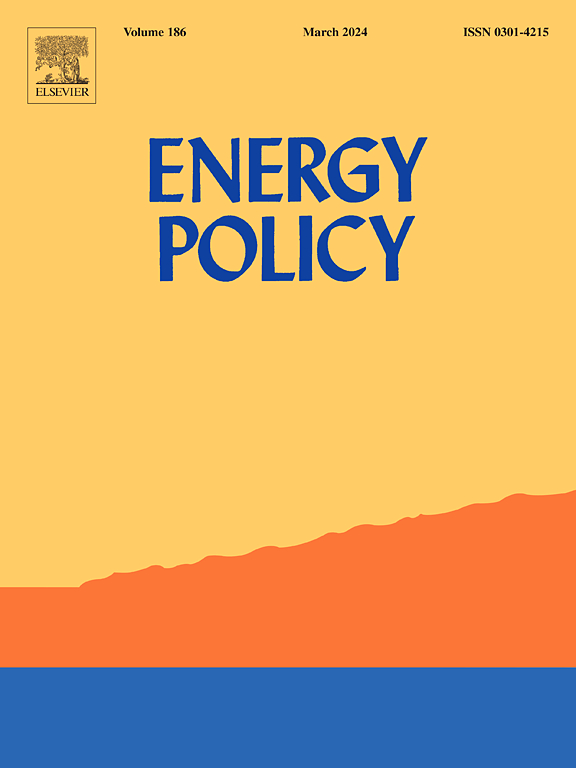市场需求不确定性下的中国碳交易市场均衡模型——以火电行业为例
IF 9.2
2区 经济学
Q1 ECONOMICS
引用次数: 0
摘要
本研究考察了碳交易法规下企业如何选择产出量减少(RO)和过程变更(CIP)两种减排方式,以及不同减排策略下碳交易市场能否达到均衡。构建了基于RO和CIP还原方法的碳交易模型,并以两大火电集团为例进行实证分析。主要结论如下:(1)当企业面临的需求是均匀分布的,且碳减排成本函数的形式为对数函数时,企业有三种减排策略可供选择:产量减排、混合减排和行业退出。(2)当参与者采取不同的减排策略时,碳交易市场可以达到均衡。(3)初始碳排放权的分配显著影响企业的利润。随着碳排放权拍卖比例的提高,企业参与碳交易市场的积极性降低。(4)碳价波动与宏观煤炭价格波动呈负相关。提高电价可以在不影响碳价的情况下提高企业利润。本文章由计算机程序翻译,如有差异,请以英文原文为准。
An equilibrium model of the Chinese carbon trading market under the uncertainty of market demand: Application to thermal power industry
This study examines how to choose between the reduction methods of reduce output (RO) and change in process (CIP) for enterprises under carbon trading regulations, and whether the carbon trading market can reach equilibrium under different emission reduction strategies. A carbon trading model based on the RO and CIP reduction methods was constructed, and two large thermal power groups were taken as examples for empirical analysis. The main conclusions are as follows: (1) When the demand faced by an enterprise is uniformly distributed and the form of the carbon abatement cost function is a logarithmic function, the enterprise has three emission reduction strategies to choose from: output reduction, mixed emission reduction, and industry exit. (2) The carbon trading market can reach equilibrium when the participants take different emission reduction strategies. (3) The allocation of initial carbon emission rights significantly affects the profits of enterprises. As the auction ratio of carbon emissions rights increases, the enthusiasm of enterprises to participate in the carbon trading market decreases. (4) The fluctuation of the carbon price is inversely related to the fluctuation in the macro coal price. Increasing the electricity price can improve the profits of enterprises without affecting the carbon price.
求助全文
通过发布文献求助,成功后即可免费获取论文全文。
去求助
来源期刊

Energy Policy
管理科学-环境科学
CiteScore
17.30
自引率
5.60%
发文量
540
审稿时长
7.9 months
期刊介绍:
Energy policy is the manner in which a given entity (often governmental) has decided to address issues of energy development including energy conversion, distribution and use as well as reduction of greenhouse gas emissions in order to contribute to climate change mitigation. The attributes of energy policy may include legislation, international treaties, incentives to investment, guidelines for energy conservation, taxation and other public policy techniques.
Energy policy is closely related to climate change policy because totalled worldwide the energy sector emits more greenhouse gas than other sectors.
 求助内容:
求助内容: 应助结果提醒方式:
应助结果提醒方式:


